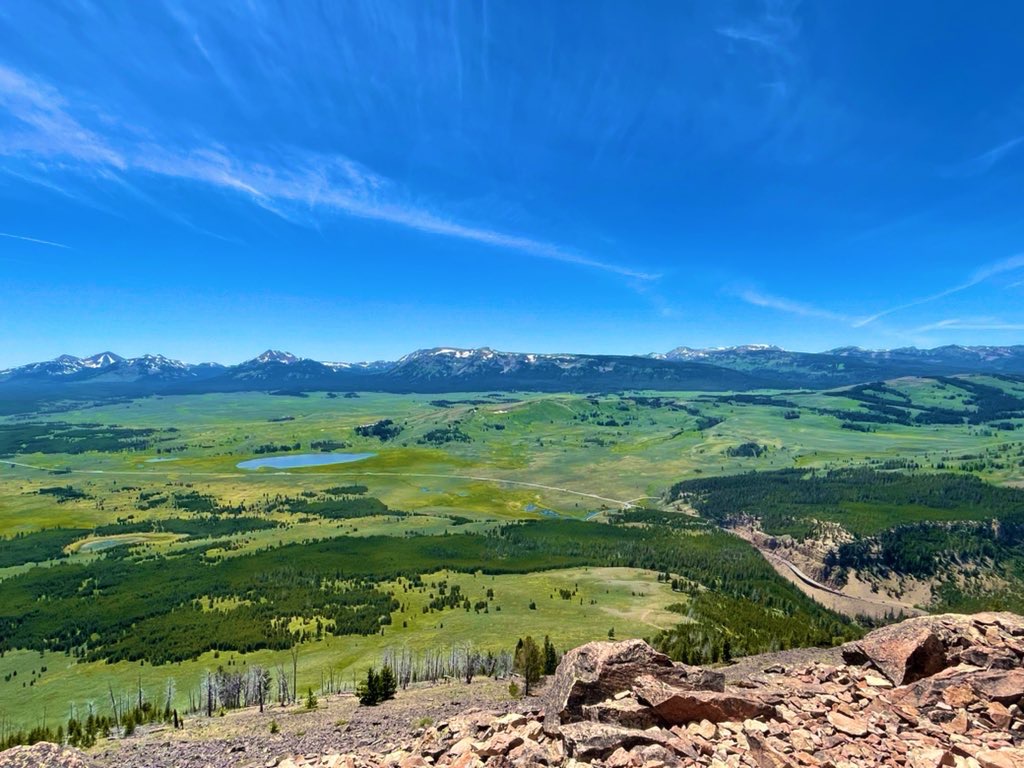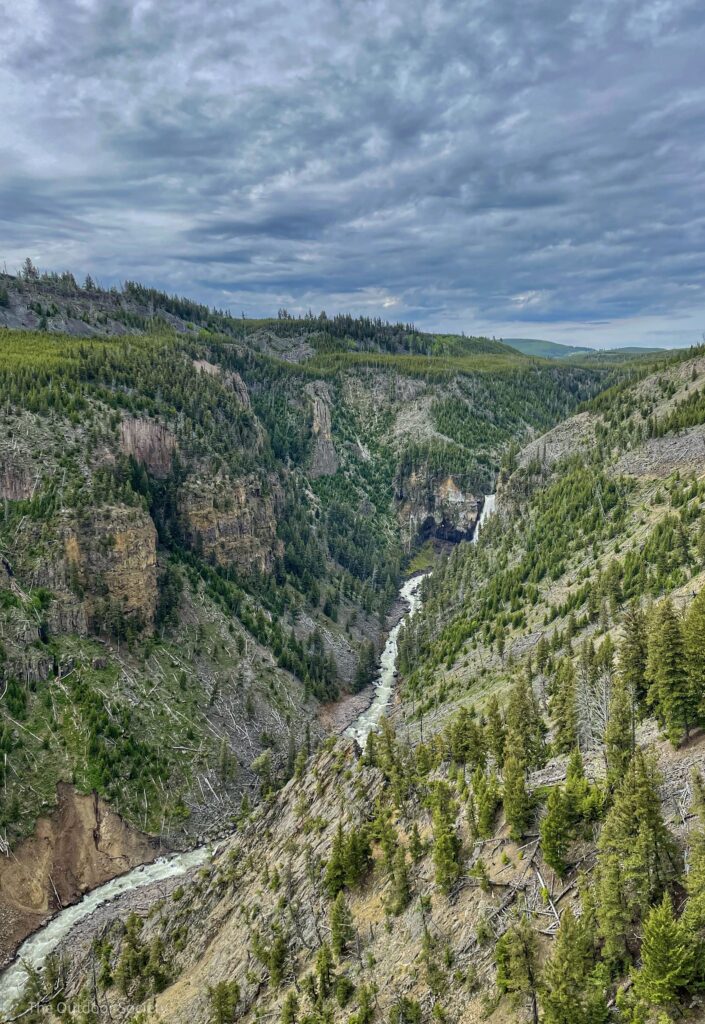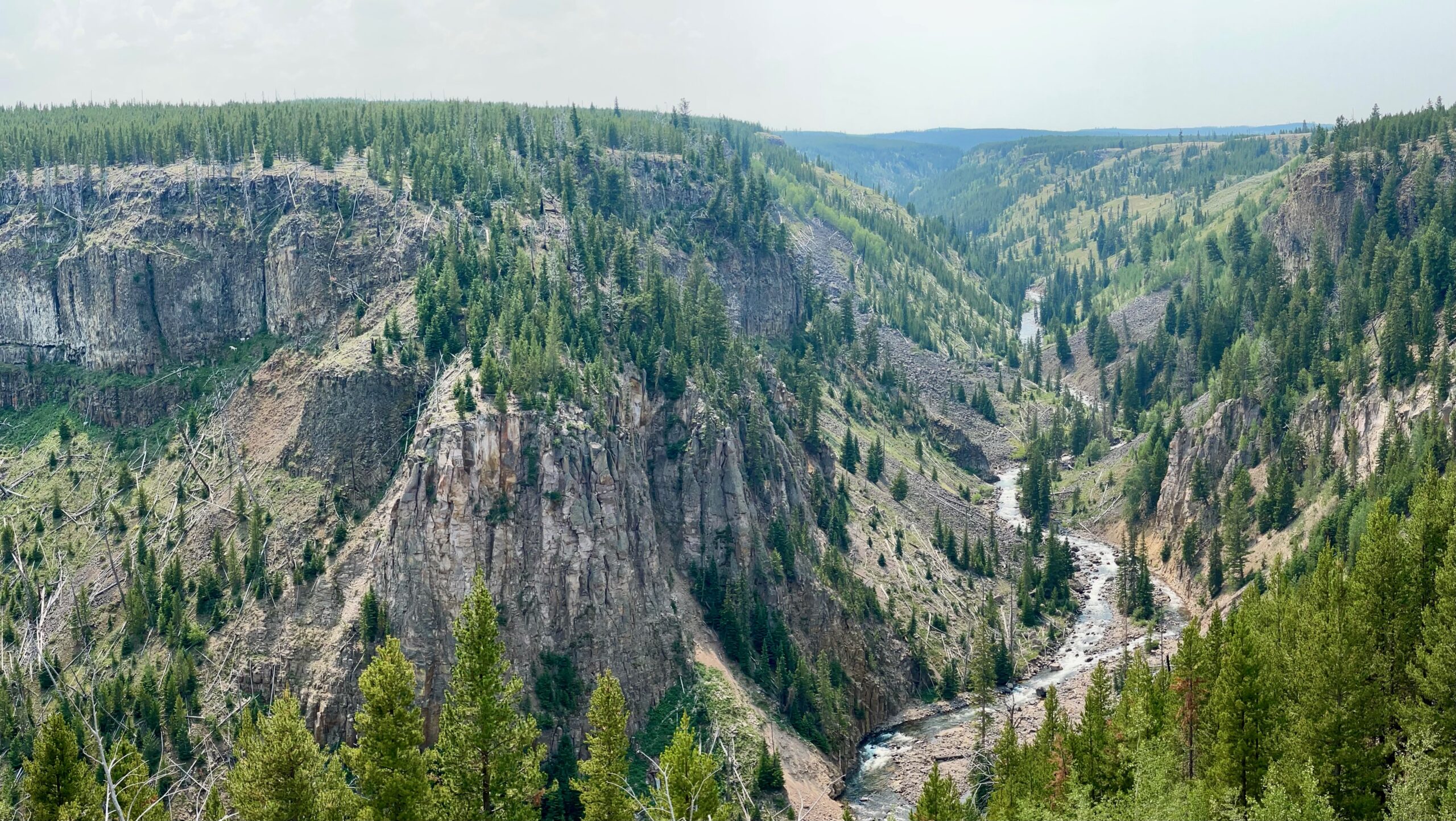On July 24th, 2024, temperatures in Yellowstone National Park were hovering near the 90s. Smoke from fires in Canada created a haze, but not enough to block the sun’s toasty rays. While many were floating the river outside of the park or munching on ice cream from numerous shops inside the park, I was on the trails.
The trek for the day was one of my hiking tour routes near Mammoth Hot Springs; The Bunsen Peak Loop. While many who wander the trails in the park know Bunsen Peak, few who make the summit know that the trail continues and creates a fun and scenic loop hike.
On this hot day, the loop hike was the goal. I’ll get into details on that hike and the picture of the goats after introducing you to Bunsen Peak.

Get To Know Bunsen Peak
Bunsen Peak is located in Yellowstone National Park and offers hikers stunning panoramic views of the surrounding landscape. It is one of the more popular trails in the park, but nowhere near the popularity of the boardwalk trails or even Mount Washburn.
The first recorded summit of the peak was by Ferdinand V. Hayden and Captain John W. Barlow in 1871. Bunsen Peak was not named until 1872 during the second Hayden Geologic Survey. E. S. Topping named the peak Observation Mountain in 1872 as well, but that name did not stick, It was instead named after the German chemist Robert Bunsen, who studied geysers and invented the Bunsen Burner.
Bunsen Peak stands at an elevation of 8,564 feet and is an ancient volcano cone, The mountain is easily visible from Mammoth Hot Springs and other vistas in the northwest part of Yellowstone National Park. According to the U.S. Geological Survey, Bunsen Peak is an intrusive rock body (meaning it cooled and solidified beneath the earth’s surface) that formed during the Eocene from lava flows in the Absaroka Volcanic Supergroup, 53 to 43 million years ago.
Today, Bunsen Peak is most often reached via a 2.1-mile trail (one way) that switchbacks and climbs roughly 1,300 feet to the summit. At the top, hikers enjoy sweeping views of the Blacktail Plateau, Swan Lake Flat, the Gallatin Mountain Range, and the Yellowstone and Gardner River Valleys.

The Loop And The Mountain Goats
Beyond the summit, a boot path can be followed, which eventually drops down the backside of Bunsen. Once you descend the mountain, you’ll meet up with an old road that connects Mammoth to Swan Lake Flats. This trail used to be much more traveled, as it led to Osprey Falls, but the floods of 2022 severely damaged the trail down to Osprey Falls, closing the trail and drying up activity on the old road section.
Those in the know continue to make the trek up Bunsen on the main trail and down the back, as a slight detour from the loop allows viewing of Osprey Falls from a distance. You can’t hike down to it, as I mentioned in the previous paragraph, but seeing a waterfall few see is always a treat, even if it is from a distance. This is what I did on the 24th, making sure that the waterfall was appreciated.
After seeing the falls, the trek back to the trailhead follows the old road on a mostly level path, giving those walking it full enjoyment without any real effort. I often see bears on this backside path, so my attention and scanning eyes were on alert. However, on this hot day, no bears were seen. As the trek met a glorious viewpoint of the Gardner River, a stop was taken and pictures were snapped.
That is when I noticed what appeared to be a few lingering patches of snow across the wide expanse. After looking more directly, the patches of snow started to move. They were mountain goats.
Now, I have seen mountain goats in a lot of places in the park, but I had never seen them above the Gardner River by Bunsen Peak. This was a first.
Can You Spot The Mountain Goats?

I am often asked how I quickly see animals so far off in the distance. I like to joke that it is my one skill in life. The realistic answer is that I spend a lot of time scanning in and out of the park and when one does this for thousands of hours a year, you just get used to spotting things that don’t quite fit in. Sometimes it is just a weird-looking branch or rock, sometimes it is a bear or wolf. In this case, it was mountain goats.
Need Some Help?
Here is a closer view.

Become a Wildlife Watching Expert in Yellowstone
Embark on a captivating journey through the untamed beauty of Yellowstone National Park with my guidebook, “Wildlife Watching Yellowstone.” Immerse yourself in the awe-inspiring landscapes and learn the secrets of one of nature’s greatest spectacles. This guide is your passport to a world where bison roam freely, grizzlies majestically traverse the terrain, and elusive wolves play their part in the delicate balance of the ecosystem.
Whether you’re an avid nature enthusiast or a first-time explorer, this meticulously crafted guidebook will unlock the wonders of Yellowstone’s wildlife, offering insights into their behavior, habitats, and the best spots for unforgettable encounters. Let the pages come alive with vivid descriptions, stunning photographs, and expert tips, inviting you to witness the magic of the natural world in all its glory. Seize the opportunity to create lasting memories and deepen your connection with the wilderness – “Wildlife Watching Yellowstone” is your key to unlocking the wonders of this iconic national treasure.




